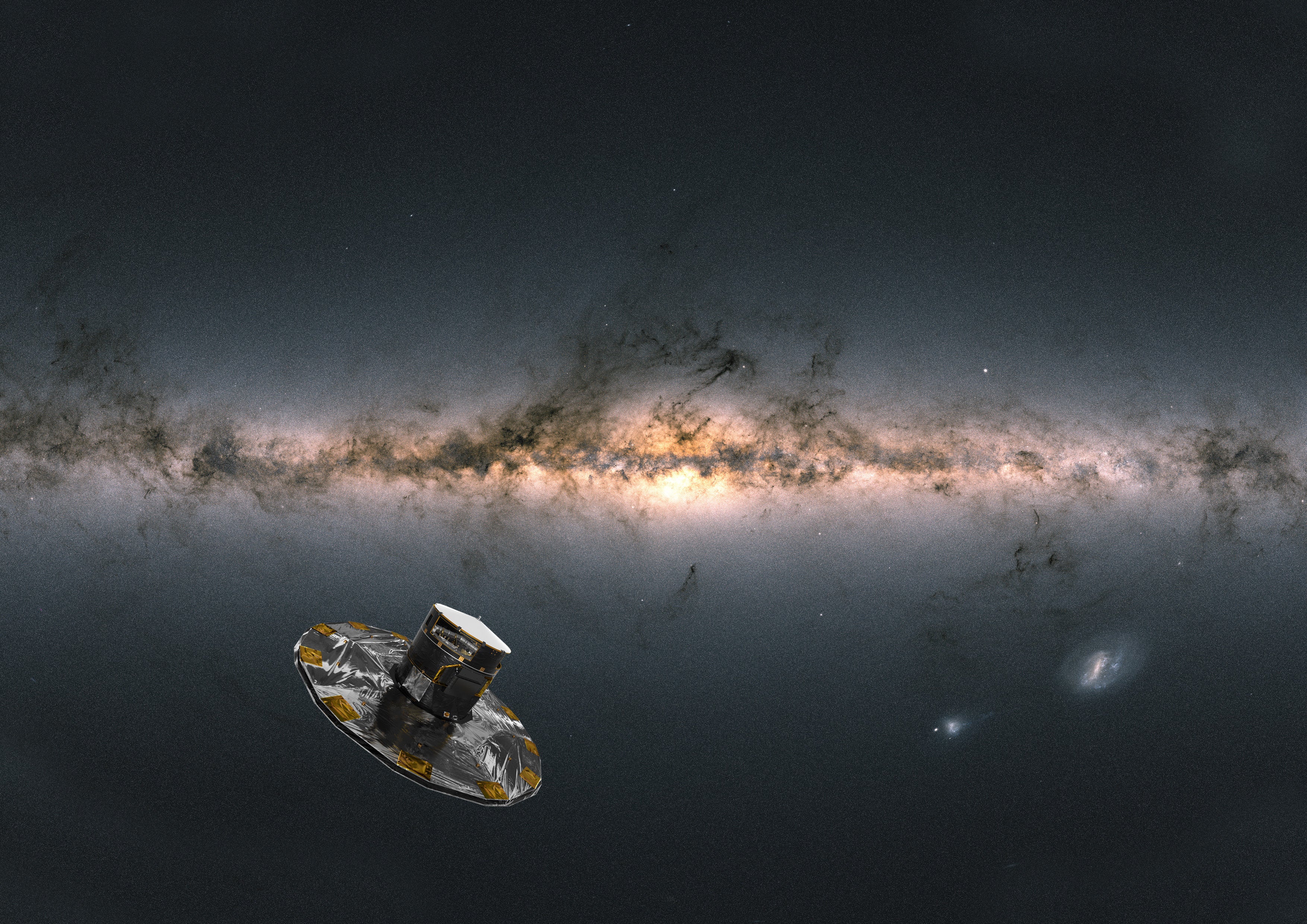Space schedule: Gaia data, Nasa Moon rocket test, and Webb’s first photos
Gaia’s latest map of the galaxy will drop, follow by the first public images taken by the James Webb Space Telescope

Your support helps us to tell the story
From reproductive rights to climate change to Big Tech, The Independent is on the ground when the story is developing. Whether it's investigating the financials of Elon Musk's pro-Trump PAC or producing our latest documentary, 'The A Word', which shines a light on the American women fighting for reproductive rights, we know how important it is to parse out the facts from the messaging.
At such a critical moment in US history, we need reporters on the ground. Your donation allows us to keep sending journalists to speak to both sides of the story.
The Independent is trusted by Americans across the entire political spectrum. And unlike many other quality news outlets, we choose not to lock Americans out of our reporting and analysis with paywalls. We believe quality journalism should be available to everyone, paid for by those who can afford it.
Your support makes all the difference.It will be a busy summer for space no matter what, given that Nasa plans to try another fueling test of its mega Moon rocket in June, and the first science images from the fully commissioned James Webb Space Telescope will be revealed in early July.
But some missions have been bumped into the fall or later, such as the Psyche Mission that was expected to launch 1 August, and now will not launch until the fall.
Read below for more on what’s next in space in the coming weeks.
Gaia mission third data release — Monday 13 June
Gaia is the European Space Agency’s space observatory dedicated to building a three-dimensional map of the cosmos.
Launched in 2013, Gaia returned its first dataset in 2016, which contained the locations and luminosity of more than 1 billion stars. It’s second data release in December 2020 offered a detailed map of more than 2 billion stars in our Milky Way galaxy.
The third Gaia dataset will be released to the public on Monday June 13, and will contain spectrometry data for millions of stars, and information about exoplanets throughout the cosmos. The findings could provide new targets for observation by the James Webb Space Telescope, which is about a month away from releasing its first images to the public.
Nasa’s Moon rocket “wet dress rehearsal” — 18 June
On 5 June, Nasa rolled its giant Moon rocket, the Space Launch System, (SLS) back to launch complex 39B at Kennedy Space Center in Florida to prepare for the space agency’s fourth attempt at a crucial fueling test.
Nasa aims to begin the “wet dress rehearsal” on Saturday 18 June, a simulation of launch day processes that will include loading the rocket with cryogenic propellant on Monday 20 June. The propellant loading test is a crucial step before the SLS and the Orion spacecraft it carries can launch on the first uncrewed test flight for either vehicle.
Three previous attempts at the wet dress rehearsal made in April failed due to faulty valves, fans, and other components of the mobile launch platform holding the rocket, and on the rocket’s upper state itself. Nasa rolled the 322-foot-tall rocket back into the Vehicle Assembly Building on 26 April and spent the next month troubleshooting and fixing problems.
As recently as March, Nasa officials hinted that Artemis I, an uncrewed launch of SLS and Orion that will see the latter fly beyond the Moon and back, could take place in May. But the technical issues raised during the earlier wet dress rehearsal attempts have led Nasa assistant administrator Bob Cabana to suggest that an Artemis I launch by sometime in August would take a lot of hard work to pull off.
SLS and Orion together form the core of Nasa’s Artemis Moon program. Following a successful wet dress rehearsal and successful Artemis I test flight, a crewed mission to orbit the Moon, Artemis II, is scheduled for May 2024. Artemis III, the mission that will return humans to the lunar surface, is scheduled for 2025.
Psyche asteroid mission — launch delayed until no earlier than 20 September
Nasa’s Psyche spacecraft, originally scheduled to launch 1 August, will now take to the skies in the fall due to a software issue.
“To allow more time for this work, the launch period is being updated to no earlier than Sept. 20, 2022, pending range availability,” a Nasa blog read.
On 2 May, the Psyche spacecraft was flown from the space agency’s Jet Propulsion Laboratory facility in California to Kennedy Space Center in Florida for preflight testing.
Psyche will be the first spacecraft to use solar-electric propulsion to travel beyond the Moon, using 800 square feet of solar panels to power its Hall effect thrusters for the 1.5 billion mile journey to the asteroid Psyche in the main asteroid belt. Thrusters use electric fields to push propellant and generate thrust, and are very efficient, but take a long time to build up speed — Psyche the spacecraft won’t reach Psyche the asteroid until 2026.
Join our commenting forum
Join thought-provoking conversations, follow other Independent readers and see their replies
Comments